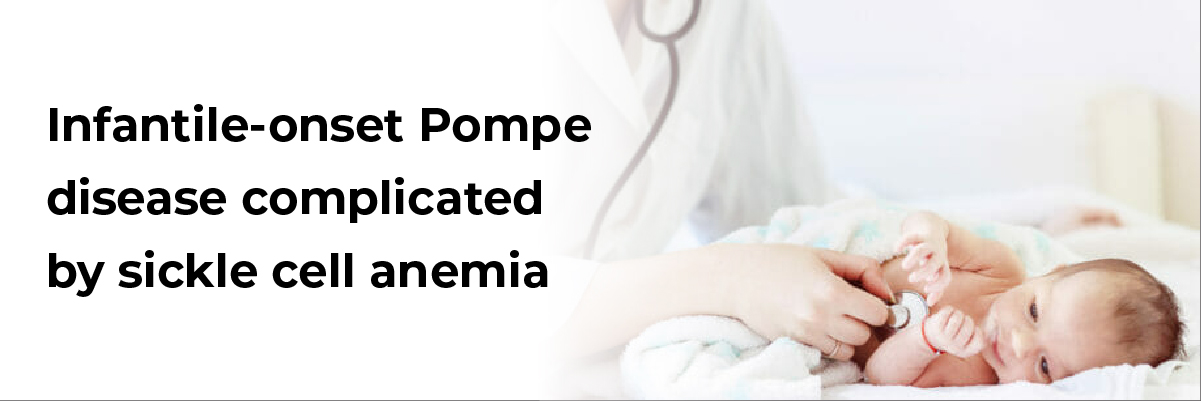
 IJCP Editorial Team
IJCP Editorial Team
Infantile-onset Pompe disease complicated by sickle cell anemia
A newborn born at 39-week gestational age developed respiratory distress shortly after birth. The baby boy required transient non-invasive respiratory support and was admitted to the neonatal intensive care unit (NICU).
The child was born of an uncomplicated pregnancy from non-consanguineous parents. Both parents had been previously diagnosed as heterozygous carriers for the HBB c.20A>T, p.(Glu7Val) variant – causative of sickle cell anemia (SCA).
On examination, the neonate had hypotonia and mild macroglossia. His chest radiograph showed marked cardiomegaly; severe left ventricular hypertrophy was detected on echocardiogram. Other findings were – elevated pro-B-type natriuretic peptide, creatine-kinase, and aldolase.
Newborn screening (NBS) showed a decreased GAA enzyme activity at 4%. There was the absence of Hb A and the presence of Hb F and S, characteristics of SCA.
The neonate was started on alglucosidase alfa infusions, along with an immune tolerance induction protocol – methotrexate for three consecutive days on the day before the infusion, on the 30th day of life. This was followed for the first three enzyme replacement therapy (ERT) infusions.
After confirmatory SCA diagnosis, the hereditary persistence of fetal hemoglobin was ruled out. The neonate was diagnosed with infantile-onset Pompe disease (IOPD). He was put on penicillin V potassium prophylaxis – at the age of 1 month.
When the child attained 2 months of age, his Hb decreased to 8.4 g/dl; hence, chronic red blood cell transfusion therapy was commenced as the primary disease-modifying therapy. Thereafter, the patient sustained new-onset left ventricular dilation accompanied by cardiac hypertrophy. The neonate was started on enalapril to prevent cardiac remodeling.
At 7 months, his ERT dose per kg body weight was tapered – up to 20 mg/kg of body weight. A respiratory failure episode led to an echocardiogram, which disclosed the resolution of left ventricular hypertrophy with continuing dilation.
The patient had received a lifetime total of 10 pRBC transfusions, with a hemoglobin nadir of 7.7 g/dL. The child remains gastrostomy-dependent. He continues to exhibit significantly deficient axial and appendicular muscle tone.
https://www.frontiersin.org/articles/10.3389/fped.2022.944178/full

IJCP Editorial Team
Comprising seasoned professionals and experts from the medical field, the IJCP editorial team is dedicated to delivering timely and accurate content and thriving to provide attention-grabbing information for the readers. What sets them apart are their diverse expertise, spanning academia, research, and clinical practice, and their dedication to upholding the highest standards of quality and integrity. With a wealth of experience and a commitment to excellence, the IJCP editorial team strives to provide valuable perspectives, the latest trends, and in-depth analyses across various medical domains, all in a way that keeps you interested and engaged.




















Please login to comment on this article